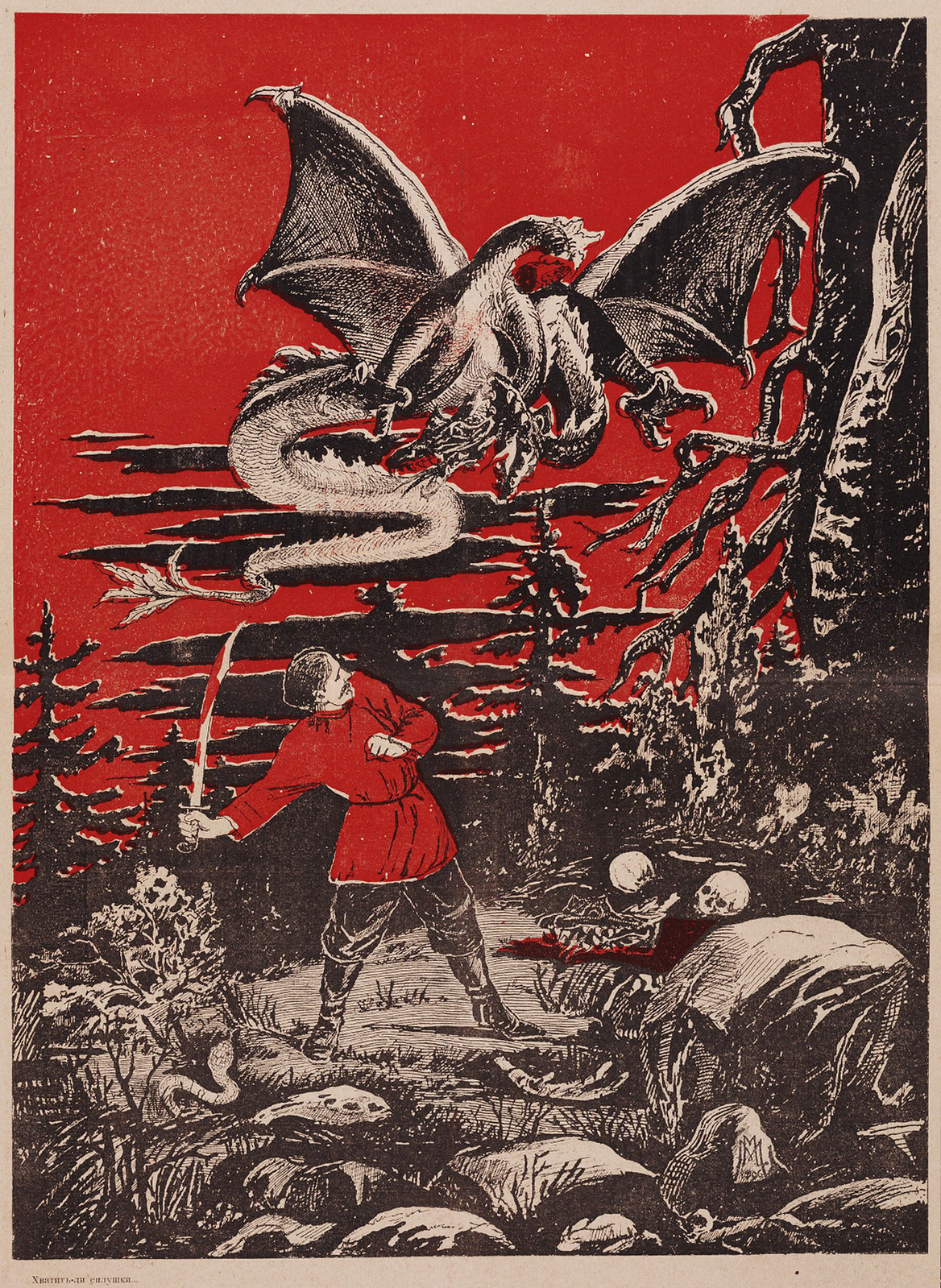
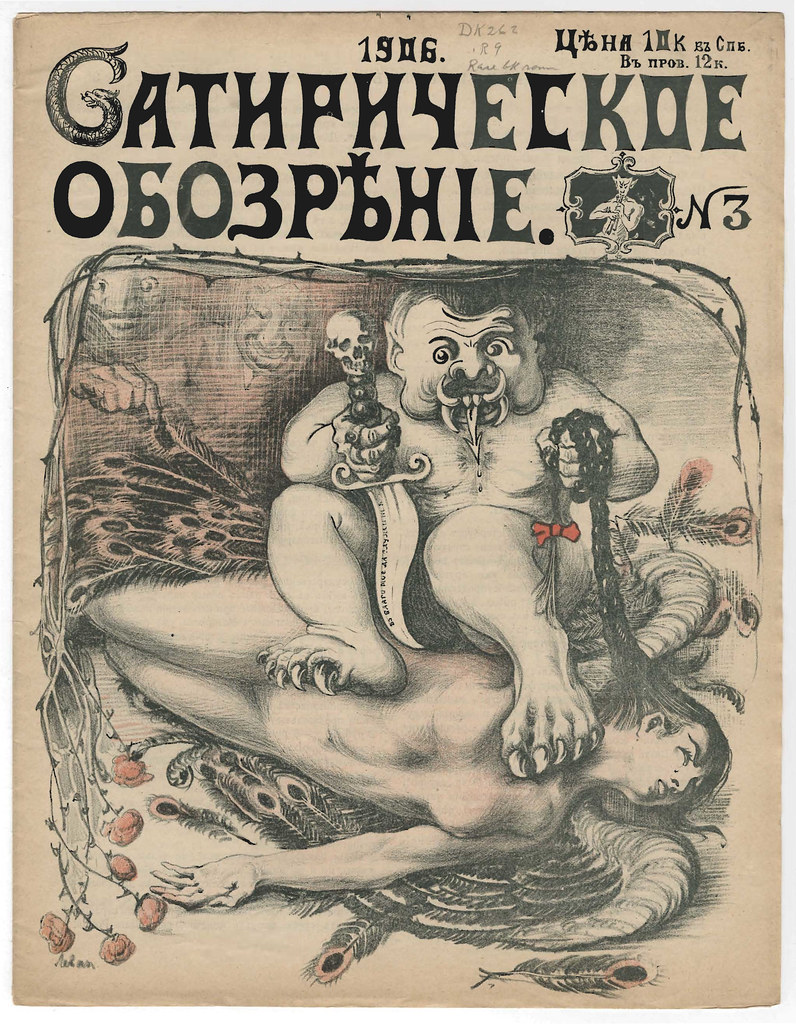
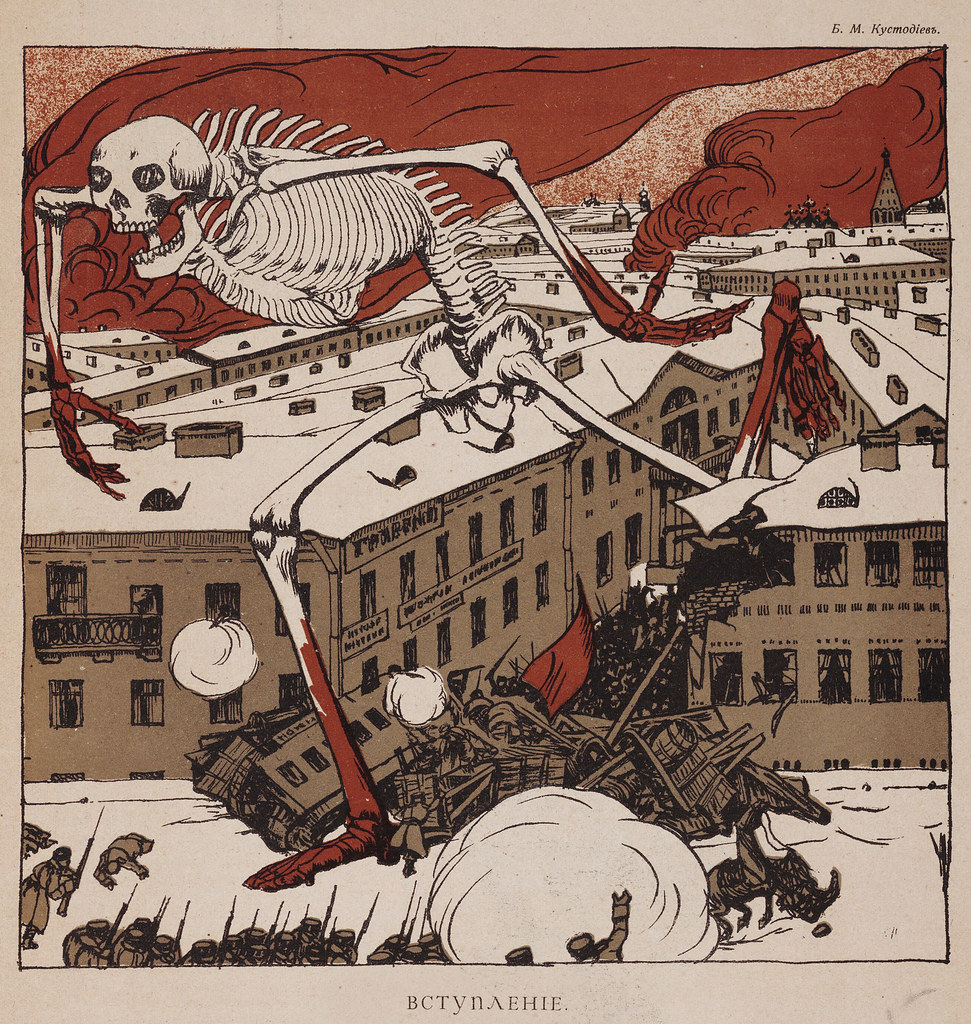







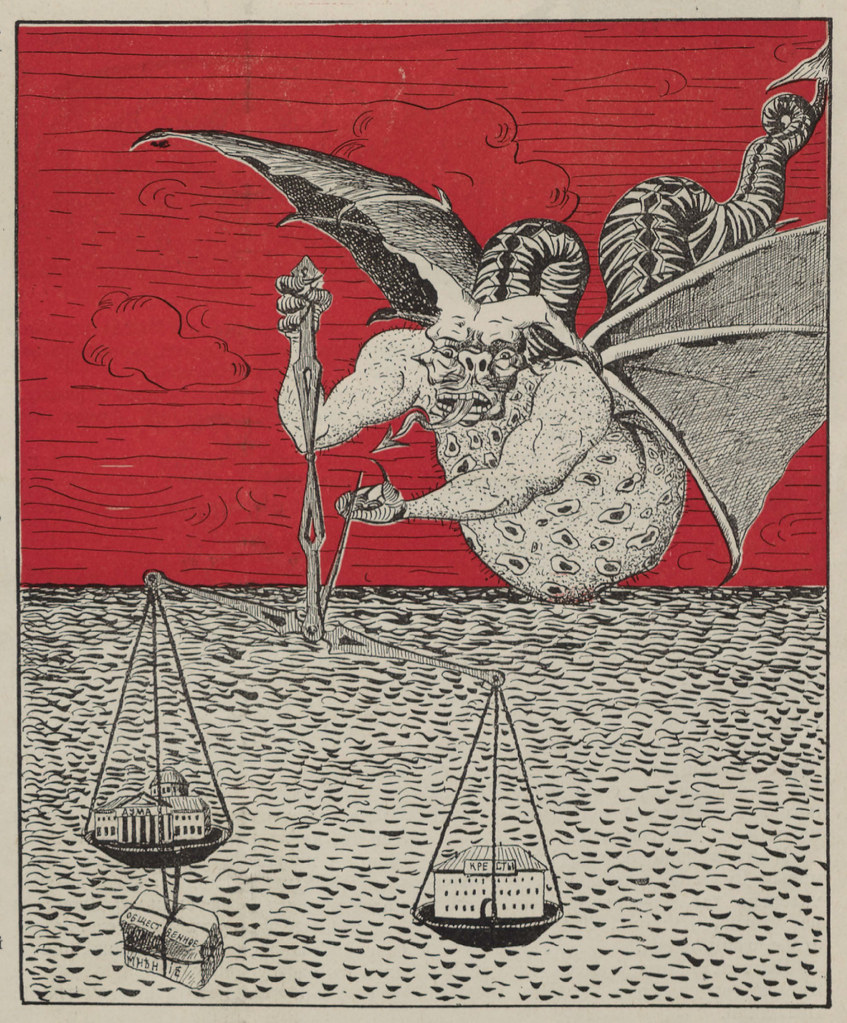
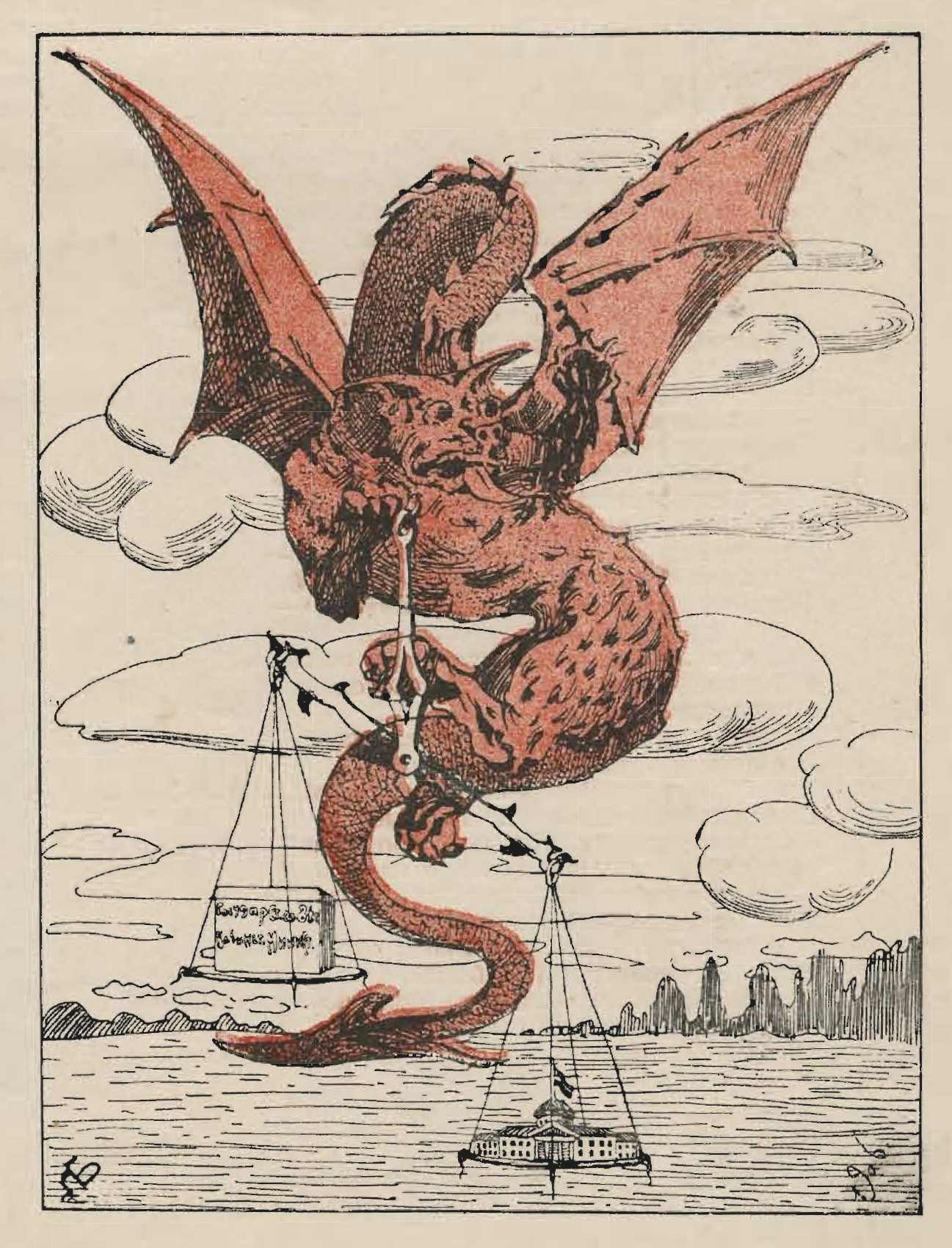






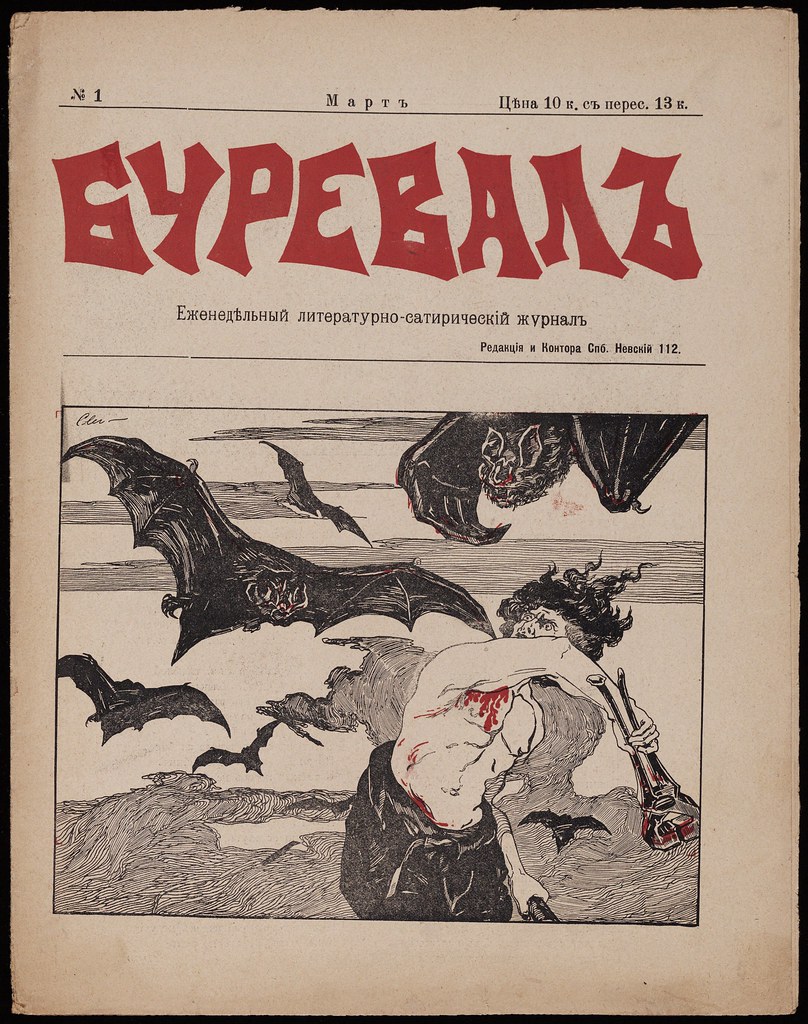



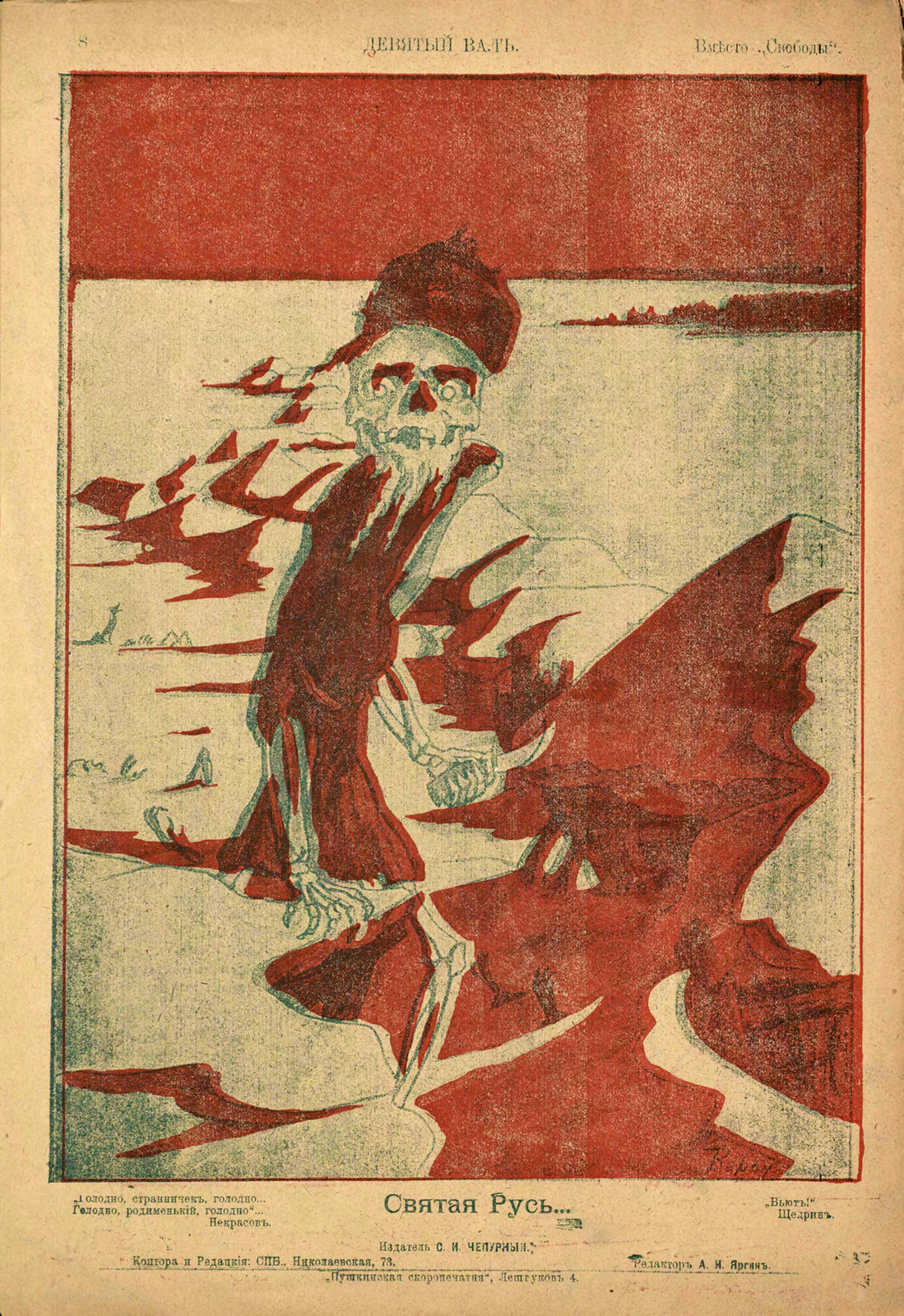

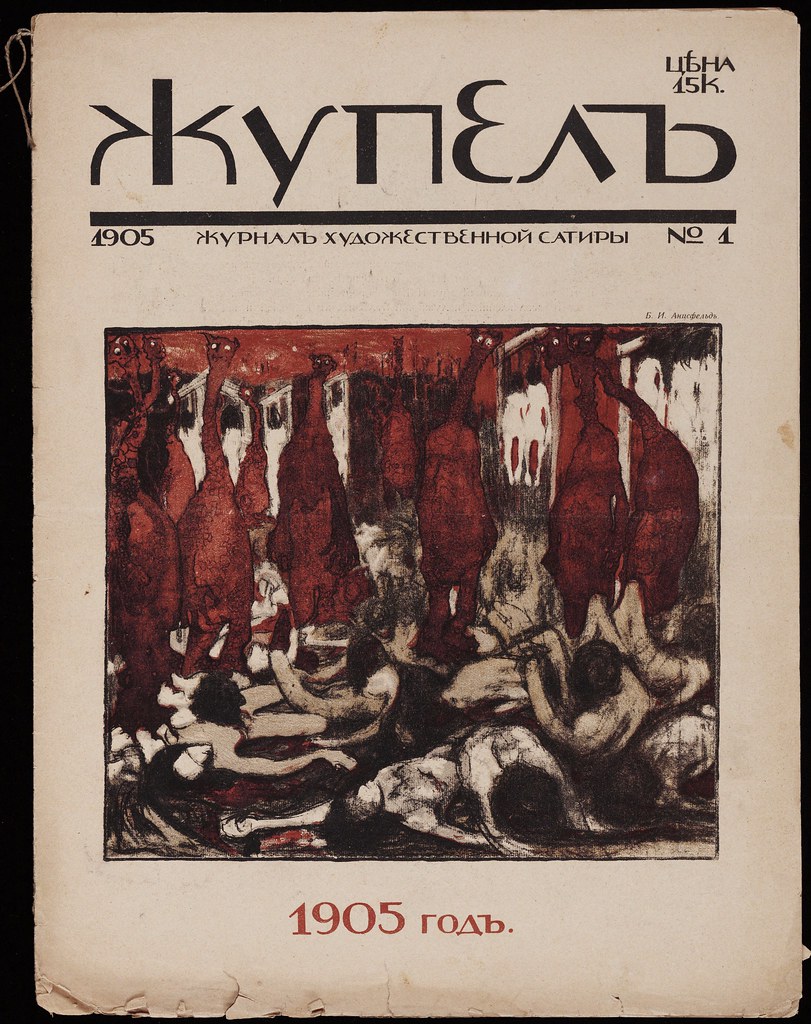




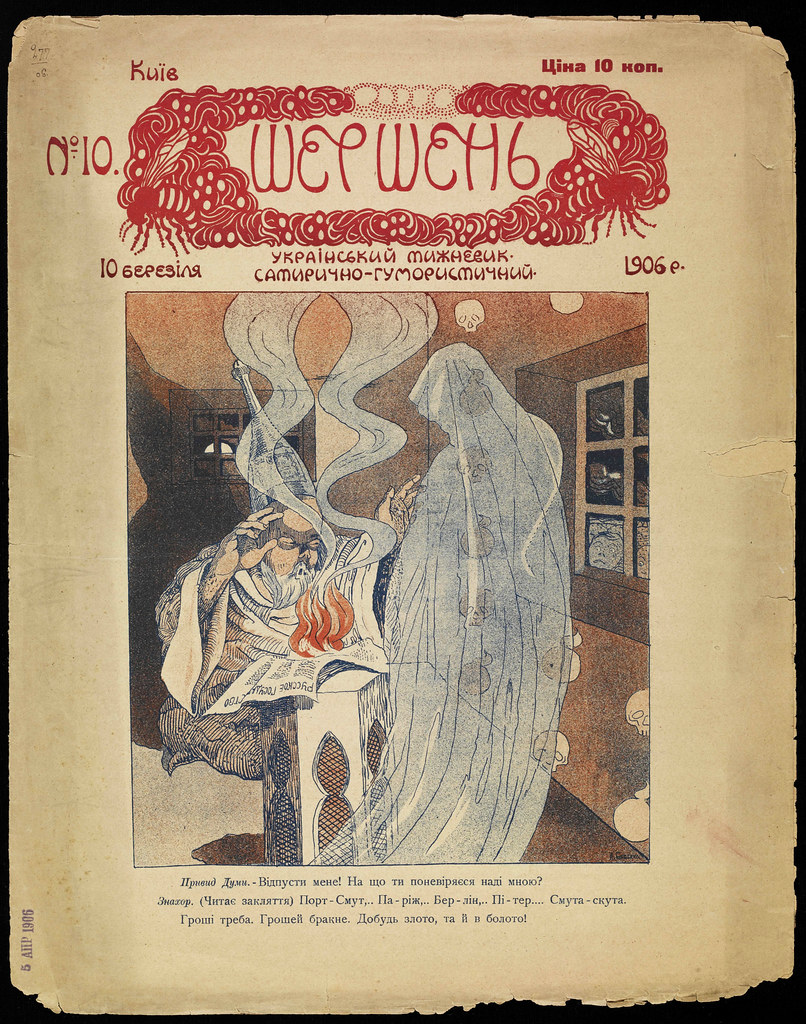
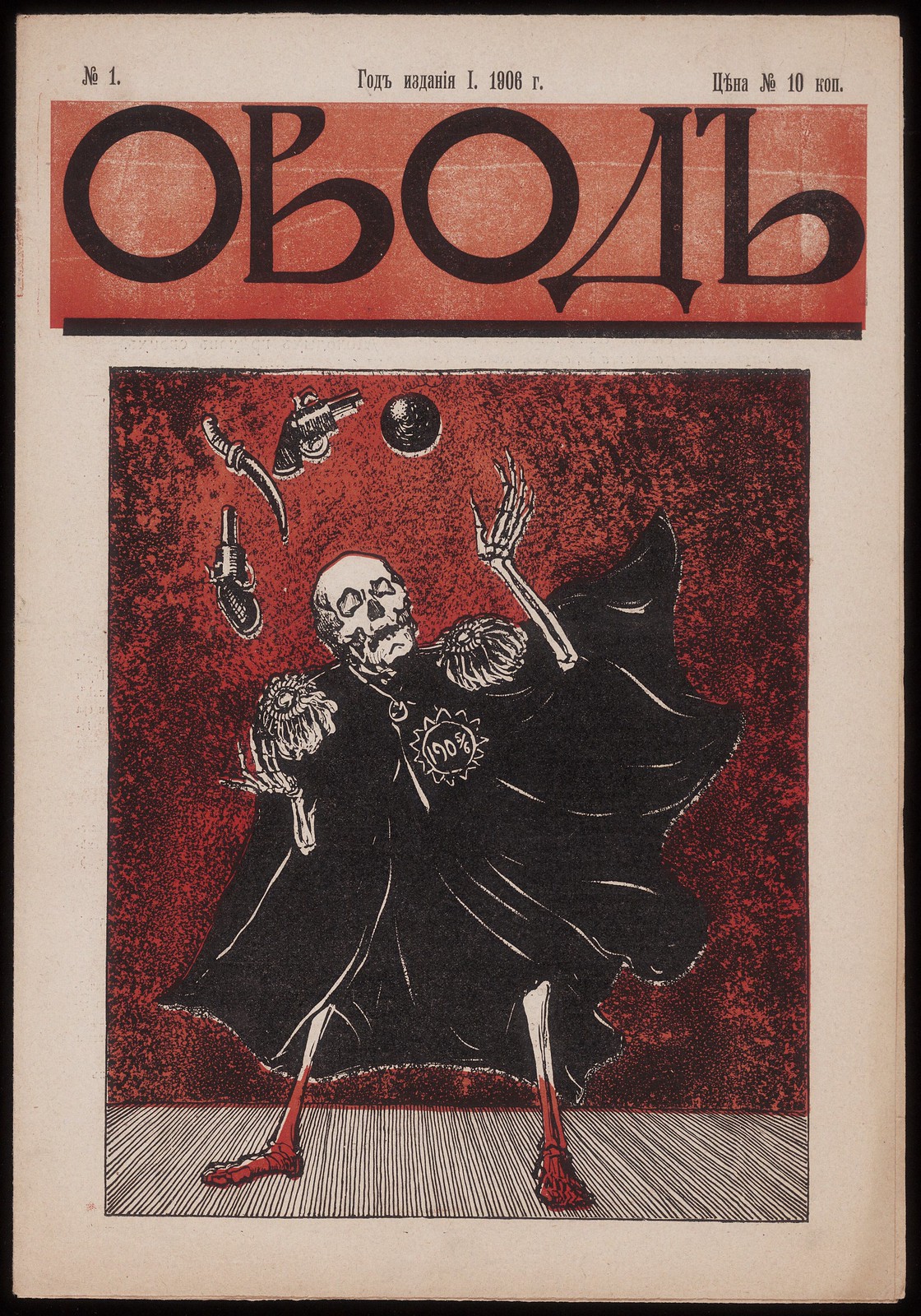

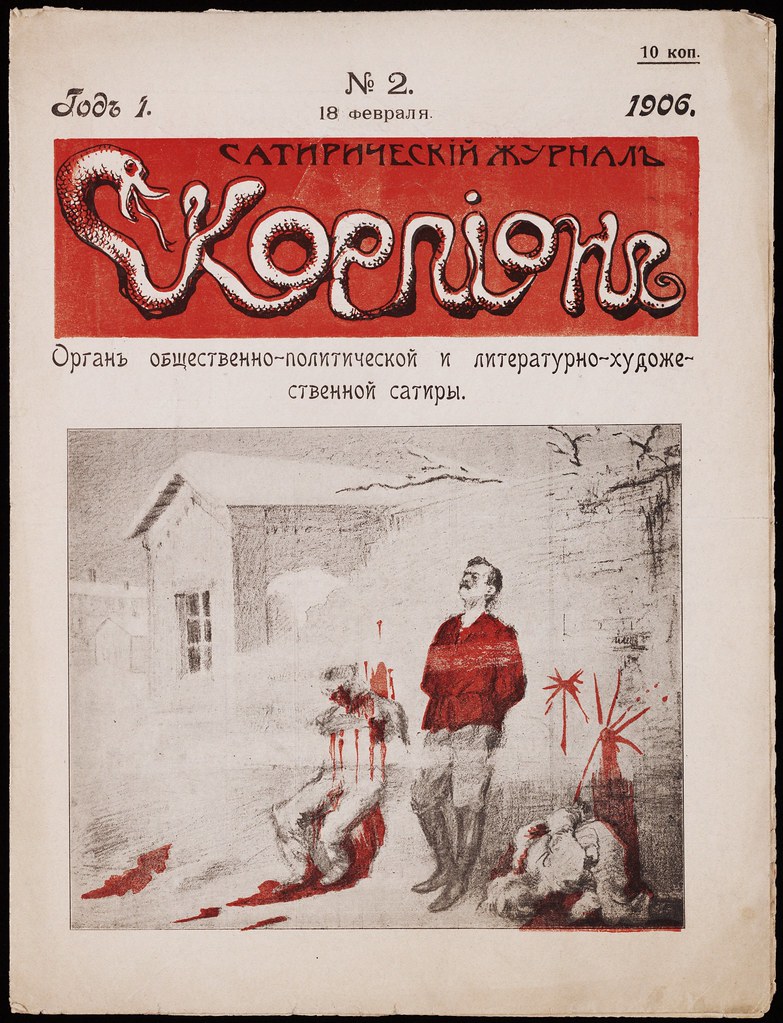

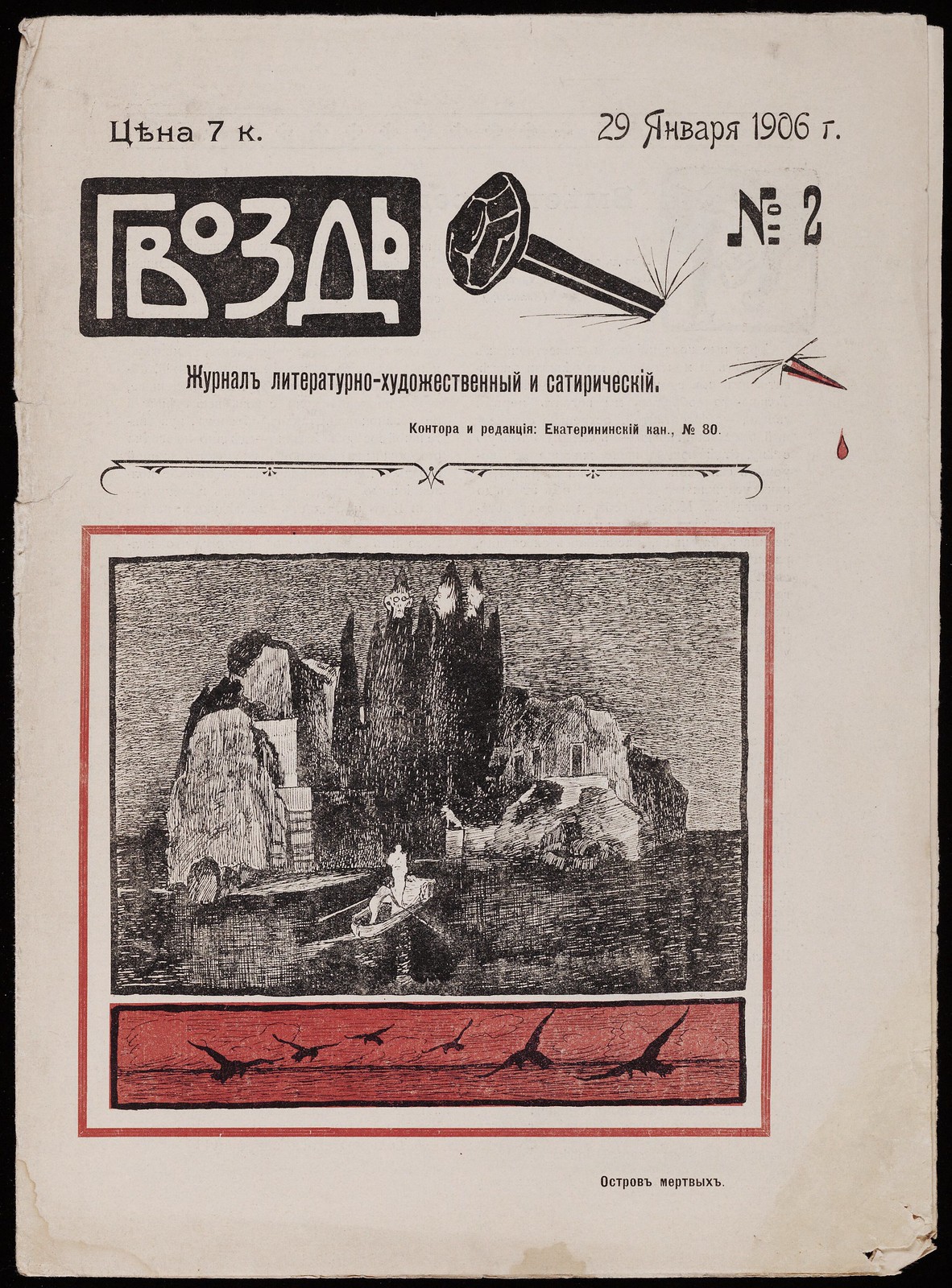






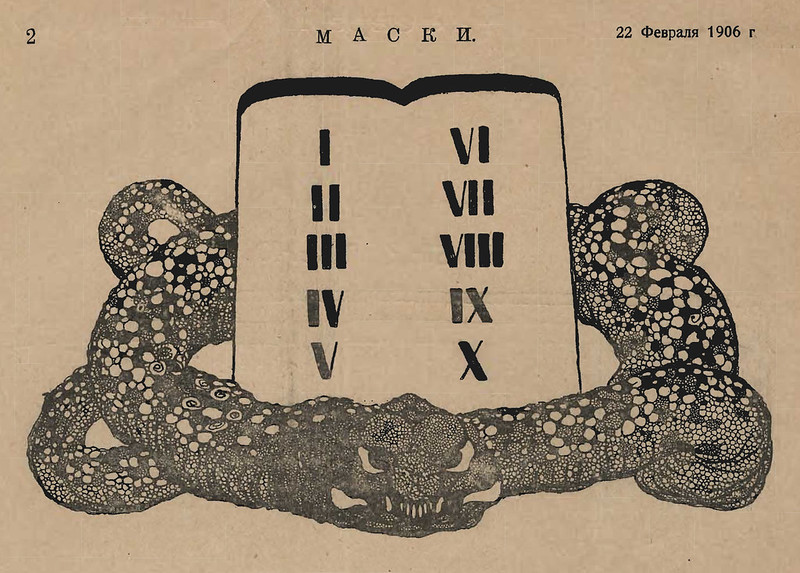



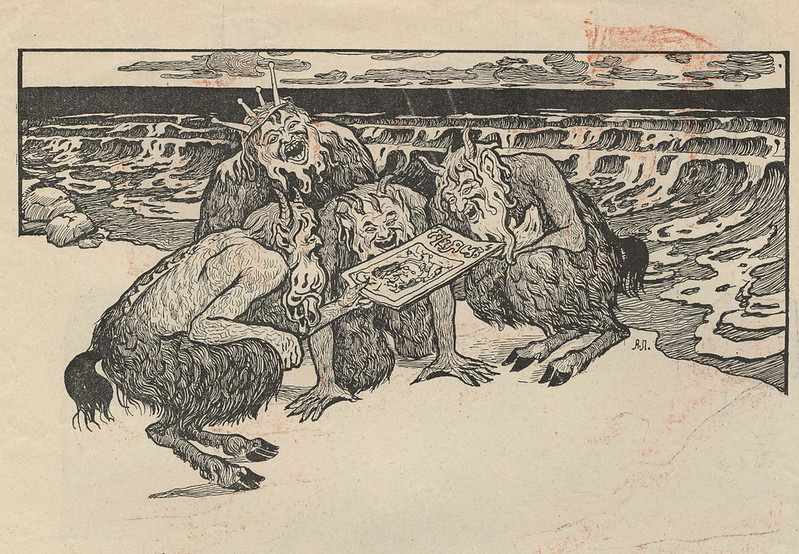


"This collection documents some of the most important events of the period known as the first Russian Revolution of 1905-1907. It was during this unprecedented rise of national self-identity that the first Russian Constitution and Russian Parliament were initially created. The first Russian Revolution was a period of struggle for political, social and human rights, and the press, which had previously been subject to censorship, enjoyed a new freedom which had never before appeared in Russia.
Nevertheless, disillusionment with the political and social reforms was expressed through political satire and caricature, published in numerous journals all over the country. The pages of these journals served as an arena for political parties and the newly born social classes of Russia – both the bourgeois and the workers. The explicit satirical form of these publications and their subsequent immediate distribution to interested readers attracted many well-known writers and artists who were either contributors or, occasionally, editors of these journals. The journals in the collection present a unique and sparkling collaboration amongst famous Russian authors such as Konstantin Bal’mont, Ivan Bunin, Maxim Gorky, Aleksandr Kuprin, Valerii Brusov, etc., with the artistic talents of Ivan Bilibin, Boris Kustodiev, Léon Bakst, Valentin Serov, Alexandre Benois, and others.
As the Russian autocracy regained its power, the unprecedented freedom of the Russian press diminished and then vanished. While some journals were published continuously for months afterward, many others were either closed or suppressed, and their editors prosecuted, with the entire publishing run of some issues confiscated and destroyed by the authorities. " - quote source
Images mostly found at USC Libraries.

No comments:
Post a Comment